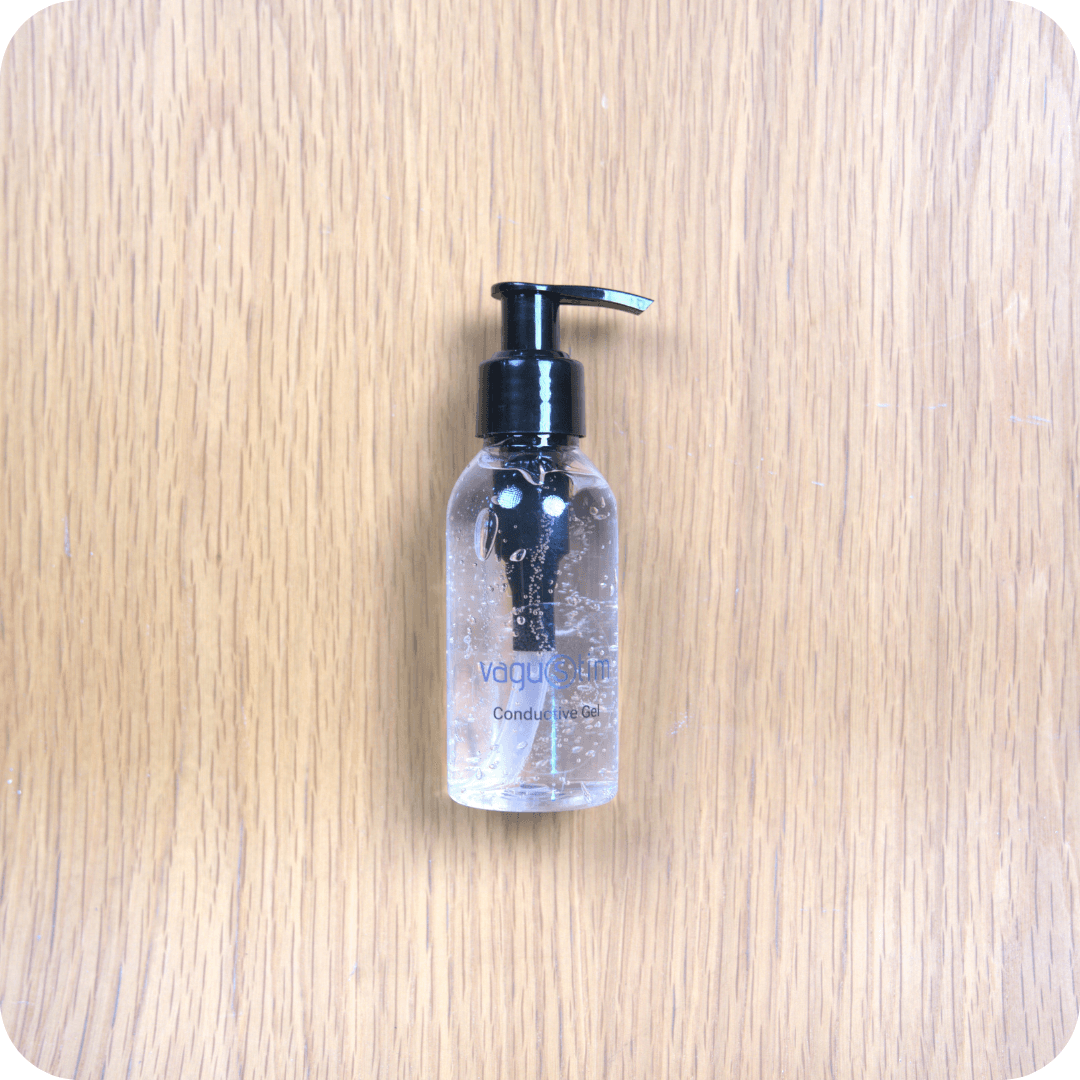Vagus activation has been applied in both scientific studies and practical use for nearly two decades. The vagus is a crucial component of the parasympathetic nervous system and contributes to functions like maintaining internal balance, managing stress responses, and influencing immune signaling. Vagus activation can be administered through electrical methods, either invasively from the cervical region or non-invasively from the neck or ear. Due to the dynamic nature of autonomic nervous system activity, tailoring stimulation parameters to the individual is considered more significant for vagus activation than in many other neuromodulation approaches. To maximize potential benefits and minimize unwanted effects, stimulation settings (e.g., frequency, duration, pulse width) can be adjusted in real-time using closed-loop systems informed by user-specific data. Metrics such as EEG, functional MRI, heart rate variability, pulse, blood pressure, and evoked potentials may be continuously collected to inform these adjustments.
The Vagus and Its Role in Internal Regulation
As the most significant pathway within the parasympathetic system, the vagus originates in the brainstem and extends through the neck to establish connections with numerous internal organs (1). Cervical vagus activation often involves surgically implanted devices and is typically performed unilaterally (2). Beyond its involvement in physiological processes, the vagus supports communication between the brain and gut and plays a role in maintaining internal regulation. Vagus activation may influence the immune response via pathways like the cholinergic anti-inflammatory reflex and has shown potential in studies related to long-standing digestive discomfort. Investigations has been explored in research involving individuals experiencing chronic discomfort or tension (3,4,5), as part of broader care protocols. Activating vagal afferent fibers can impact brainstem systems associated with mood and stress regulation. The vagus is also involved in processes related to nutrition, satiety, and energy regulation. Elevated stress can increase sympathetic activity and reduce vagal tone, potentially affecting these systems. Vagus activation may help restore balance by modulating vagal pathways (6). Its role in cardiovascular regulation has also been explored, with high-frequency components of heart rate variability viewed as indicators of vagal function (7).
Overview of Vagus Activation Methods
Approaches to vagus activation include both cervical and auricular techniques, with options ranging from invasive to non-invasive methods. Electrical activation remains the most common modality. Given the extensive distribution of the vagus and its multiple brainstem connections (8), it has been investigated for a variety of contexts. Some cervical vagus activation systems employ closed-loop designs, including algorithms that respond to cardiac signals such as increased heart rate, although optimal activation protocols are still under evaluation. While invasive vagus activation can be beneficial in clinical settings, side effects (e.g., voice changes, throat discomfort, and coughing) and the requirement for surgical intervention can limit broader adoption (9).
Auricular Vagus Activation: A Non-Invasive Alternative
Auricular vagus activation, targeting the ear’s vagal branches, can activate brain pathways similar to those affected by cervical approaches. Experimental findings confirm vagal projections from the ear to the nucleus tractus solitarius (10). Though literature does not fully agree on the most responsive auricular areas, the inner concha and tragus are often identified as effective sites. There remains uncertainty around ideal activation settings for auricular vagus activation, mirroring the ongoing exploration in cervical methods (11).
Optimizing Activation Parameters
Determining the most effective activation characteristics (e.g., waveform, intensity, frequency) requires a systematic, personalized strategy. Current non-invasive vagus activation devices generally follow an open-loop format, with pre-set parameters that do not adapt to real-time physiological changes. Because brain activity may differ between individuals and sessions, results can vary under open-loop activation. Personalized, data-informed adjustments may improve user experience and limit potential side effects.
Real-Time Monitoring and Closed-Loop Systems
An optimal vagus activation system would incorporate real-time physiological monitoring. Variables such as EEG, fMRI, heart rate variability, pulse, and blood pressure could be tracked during and outside stimulation periods to assess short- and long-term effects. Studies have shown better responses among participants who complete vagus activation sessions compared to those who discontinue prematurely. Longer engagement often corresponds with more favorable outcomes. While the mechanisms of vagus activation are still under investigation, closed-loop systems offer a way to better understand autonomic function. Despite being generally well-tolerated, identifying optimal parameters for each user remains a core challenge in auricular VNS (12,13).
Left vs. Bilateral Stimulation
Another consideration in auricular vagus activation is whether stimulation should occur on one ear or both. Cervical vagus activation is typically left-sided to avoid body rhythm changes from efferent fiber stimulation, and this practice is often mirrored in auricular protocols. However, input from both ears ultimately converges in the nucleus tractus solitarius. Bilateral activation may enhance efficacy due to increased sensory input (14). Existing literature on bilateral auricular vagus activation is limited (15). Future systems integrating artificial intelligence could help determine the most effective stimulation side for individual users.
Interpreting the Effects of Activation
Activation strength and pattern also affect outcomes. Strong, continuous, or frequent activation might produce contrasting physiological effects. Certain protocols may inadvertently increase sympathetic activity alongside parasympathetic engagement. While collecting subjective feedback is simple, objective physiological data ensures more accurate evaluation. Accurate processing of physiological responses is critical in closed-loop designs. These systems may also integrate with telehealth platforms (16).
Toward Personalized and Adaptive Vagus Activation
The vagus interacts with multiple organs (e.g., heart, lungs, digestive system), making vagus activation a widely applicable method. Selective activation of specific vagal fibers could reduce off-target effects seen with cervical vagus activation (17,18). Auricular activation sites also vary in their effects (11). Personalization remains key in all vagus activation implementations. Experimental and human studies continue to inform future guidelines (19). The future likely includes sensor-based closed-loop systems, where real-time data guides individualized activation algorithms enhanced by AI (20). While comprehensive systems are still in development, existing prototypes already explore sensor-activation feedback mechanisms (21,22,23). Bidirectional neuromodulation—recording and activating simultaneously—is also gaining attention in current research (24). Although the primary aim of vagus activation is to support autonomic regulation, individual responses vary, suggesting the value of expanding the data used for personalization (25). Additional metrics, such as somatosensory evoked potentials, pupil diameter, and salivary enzyme levels, may assist in quantifying stimulation effects (26). Quantification is increasingly recognized as important for standardizing non-invasive applications (27).
Final Considerations and Future Outlook
Despite the development of closed-loop technologies for several purposes, the number of consumer-ready devices with advanced sensor integration remains limited (28). For example, heart rhythm–responsive activation protocols have been tested in epilepsy patients (21), and real-time heart rate stabilization has been achieved in animal studies (30). Several models now explore real-time heart rate management using adaptable VNS settings (31,32). Other research explores monitoring pH levels in the vagus to guide closed-loop stimulation (33), and advanced imaging or machine learning may help predict user responsiveness in future systems (34). Vagus activation continues to be a growing field with increasing focus on adaptability, non-invasiveness, personalization, and real-time feedback to support individualized wellness experiences.
References
- Ohemeng KK, Parham K. Vagal Nerve Stimulation: Indications, Implantation, and Outcomes. Otolaryngol Clin North Am. 2020 Feb;53(1):127-143.
- Ekmekçi H, Kaptan H. Vagus Nerve Stimulation. Open Access Maced J MedSci. 2017 May 7;5(3):391-394.
- Bonaz B, Sinniger V, Pellissier S. Vagus Nerve Stimulation at the Interface of Brain–Gut Interactions. Cold Spring Harb Perspect Med. 2019 Aug 1;9(8):a034199.
- Bonaz B, Sinniger V, Pellissier S. Anti-inflammatory properties of the vagus nerve: potential therapeutic implications of vagus nerve stimulation. J Physiol. 2016 Oct 15;594(20):5781-5790.
- Johnson RL, Wilson CG. A review of vagus nerve stimulation as a therapeutic intervention. J Inflamm Res. 2018 May 16;11:203-213.
- Breit S, Kupferberg A, Rogler G, Hasler G. Vagus Nerve as Modulator of the Brain–Gut Axis in Psychiatric and Inflammatory Disorders. Front Psychiatry. 2018 Mar 13;9:44.
- Capilupi MJ, Kerath SM, Becker LB. Vagus Nerve Stimulation and the Cardiovascular System. Cold Spring Harb Perspect Med. 2020 Feb 3;10(2):a034173.
- Farmer AD, Albu-Soda A, Aziz Q. Vagus nerve stimulation in clinical practice. Br J Hosp Med (Lond). 2016 Nov 2;77(11):645-651.
- Mertens A, Raedt R, Gadeyne S, Carrette E, Boon P, Vonck K. Recent advances in devices for vagus nerve stimulation. Expert Rev Med Devices. 2018 Aug;15(8):527-539.
- Ellrich J. Transcutaneous Auricular Vagus Nerve Stimulation. J Clin Neurophysiol. 2019 Nov;36(6):437-442.
- Butt MF, Albusoda A, Farmer AD, Aziz Q. The anatomical basis for transcutaneous auricular vagus nerve stimulation. J Anat. 2020 Apr;236(4):588-611.
- Yap JYY, Keatch C, Lambert E, Woods W, Stoddart PR, Kameneva T. Critical Review of Transcutaneous Vagus Nerve Stimulation: Challenges for Translation to Clinical Practice. Front Neurosci. 2020 Apr28;14:284.
- Wang Y, Li SY, WangD, et al. Transcutaneous Auricular Vagus Nerve Stimulation: From Concept to Application. Neurosci Bull. 2020 Dec 23. DOI: 10.1007/s12264-020-00619-y.
- Kaniusas E, Kampusch S, Tittgemeyer M, et al. Current Directions in the Auricular Vagus Nerve Stimulation I – A Physiological Perspective. Front Neurosci. 2019 Aug9;13:854.
- Kutlu N, Özden AV, Alptekin HK, Alptekin JÖ. The Impact of Auricular Vagus Nerve Stimulation on Pain and Life Quality in Patients with Fibromyalgia Syndrome. Biomed Res Int. 2020 Feb28;2020:8656218.
- Kaniusas E, Kampusch S, Tittgemeyer M, et al.Current Directions in the Auricular Vagus Nerve Stimulation II – An Engineering Perspective. Front Neurosci. 2019 Jul 24;13:772.
- Thompson N, Mastitskaya S, Holder D. Avoiding off-target effects in electrical stimulation of the cervical vagus nerve: Neuroanatomical tracing techniques to study fascicular anatomy of the vagus nerve. J Neurosci Methods. 2019 Sep1;325:108325.
- Plachta DT, Gierthmuehlen M, Cota O,et al. Blood pressure control with selective vagal nerve stimulation and minimal side effects. J NeuralEng. 2014 Jun;11(3):036011.
- Musselman ED, Pelot NA, Grill WM. Empirically Based Guidelines for Selecting Vagus Nerve Stimulation Parameters in Epilepsy and Heart Failure. Cold Spring Harb Perspect Med. 2019 Jul 1;9(7):a034264.
- Guiraud D, Andreu D, Bonnet S, et al.Vagus nerve stimulation: state of the art of stimulation and recording strategies to address autonomic function neuromodulation. J Neural Eng. 2016 Aug;13(4):041002.
- Boon P, Vonck K, van Rijckevorsel K, et al. A prospective, multicenter study of cardiac-based seizure detection to activate vagus nerve stimulation. Seizure. 2015 Nov;32:52-61.
- Cukiert A, Cukiert CM, Mariani PP, Burattini JA. Impact of Cardiac-Based Vagus Nerve Stimulation Closed-Loop Stimulation on the Seizure Outcome of Patients With Generalized Epilepsy: A Prospective, Individual-Control Study. Neuromodulation. 2020 Oct 12. doi: 10.1111/ner.13290.
- Tzadok M, Harush A, Nissenkorn A, Zauberman Y, Feldman Z, Ben-Zeev B. Clinical outcomes of closed-loop vagal nerve stimulation in patients with refractory epilepsy. Seizure. 2019 Oct;71:140-144.
- Xu J, Guo H, Nguyen AT, Lim H, Yang Z. A Bidirectional Neuromodulation Technology for Nerve Recording and Stimulation. Micromachines (Basel). 2018 Oct 23;9(11):538.
- Anand IS, Konstam MA, KleinHU, et al. Comparison of symptomatic and functional responses to vagus nerve stimulation in ANTHEM-HF, INOVATE-HF, and NECTAR-HF. ESC Heart Fail. 2020 Feb;7(1):75-83.
- Burger AM, D’Agostini M, Verkuil B, Van Diest I. Moving beyond belief: A narrative review of potential biomarkers for transcutaneous vagus nerve stimulation. Psychophysiology. 2020 Jun;57(6):e13571.
- Mourdoukoutas AP, Truong DQ, Adair DK, Simon BJ, Bikson M. High-resolution Multi-Scale Computational Model for Non-invasive Cervical Vagus Nerve Stimulation. Neuromodulation. 2018 Apr;21(3):261-268.
- Sun FT, Morrell MJ. Closed-loop neurostimulation: the clinical experience. Neurotherapeutics. 2014 Jul;11(3):553-63.
- Ugalde HR, Le Rolle V, Bel A,et al. On-off closed-loop control of vagus nerve stimulation for the adaptation of heart rate. Annu Int Conf IEEE Eng Med Biol Soc. 2014;2014:6262-5.
- Tosato M, Yoshida K, Toft E, Nekrasas V, Struijk JJ. Closed-loop control of the heart rate by electrical stimulation of the vagus nerve. Med Biol Eng Comput. 2006 Mar;44(3):161-9.
- Romero-Ugalde HM, Le Rolle V, BonnetJL, et al. A novel controller based on state-transition models for closed-loop vagus nerve stimulation: Application to heart rate regulation. PLoSOne. 2017 Oct 27;12(10):e0186068.
- Romero-Ugalde HM, Le Rolle V, Bonnet JL, Henry C, Mabo P, Carrault G, Hernandez AI. Closed-loop vagus nerve stimulation based on state transition models. IEEE Trans Biomed Eng. 2018 Jul;65(7):1630-1638.
- Cork SC, Eftekhar A, Mirza KB, et al. Extracellular pH monitoring for use in closed-loop vagus nerve stimulation. J NeuralEng. 2018 Feb;15(1):016001.
- Mithani K, Mikhail M, Morgan BR, et al. Connectomic Profiling Identifies Responders to Vagus Nerve Stimulation. Ann Neurol. 2019 Nov;86(5):743-753.




